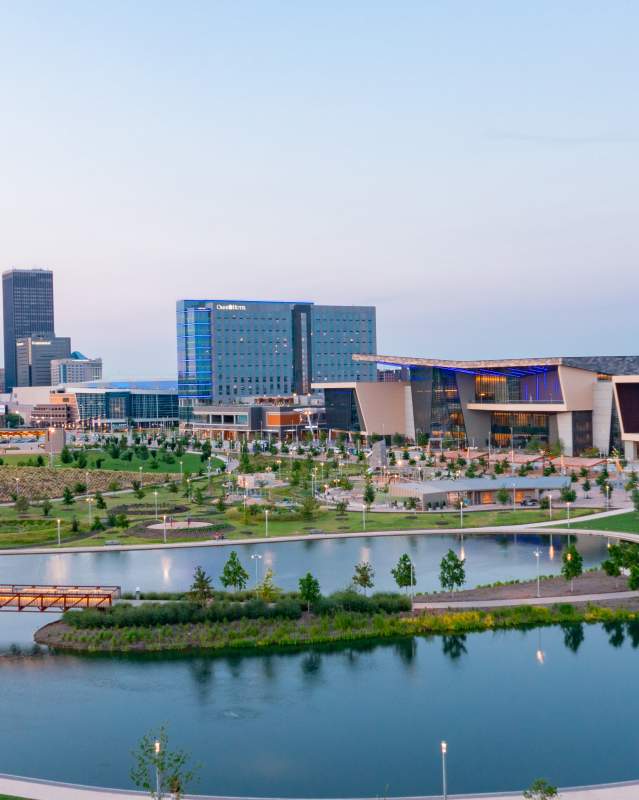Ceremony included unveiling of commemorative bronze plaques
celebrating The Samuel Roberts Noble Foundation
The National Cowboy & Western Heritage Museum unveiled a multi-million-dollar renovation of the Sam Noble Special Events Center, one of the most popular event spaces in Oklahoma, at a ribbon-cutting ceremony on Wednesday, Oct. 19.
Thanks to a generous donation from The Samuel Roberts Noble Foundation, the event space recently received a complete renovation to better equip it to hold the 250 events it hosts each year.
“There really is no other event space quite as special in the region, and we’re so excited to have been able to make the best that much better,” said Museum President & CEO Pat Fitzgerald. “We’re very grateful for The Samuel Roberts Noble Foundation and their continued support of this special part of the Museum.”
Beginning in July, the space received a floor-to-ceiling makeover, including all new paint, wood finishes, wall coverings, carpeting, lighting, A/V equipment and more, as well as new tables and chairs for use during events. This includes 212 upgraded LED light fixtures, 1,817 ceiling tiles, 3,828 carpet tiles and 3,500 square feet of wall fabric. A total of 4,195 manhours went into the almost six-week renovation.
The Noble Foundation provided the original funding for the construction of the Sam Noble Special Events center in 1992, as well as the creation of the iconic ‘Windows to the West’ Wilson Hurley triptychs. “This is a special place for so many Oklahomans,” said Vivian DuBose, chair for Noble’s Board of Directors. “It memorializes Oklahoma’s heritage and people, while providing a venue for today’s most important nonprofit events. The Noble Foundation is proud to continue our association with the National Cowboy Museum.”
Completed in 1996 by Prix de West artist Wilson Hurley, the five triptychs in the Sam Noble Special Events Center, collectively dubbed “Windows to the West,” depict different Western locations caught at sunset, with a similar horizon line and light streaming in from the West. Museum staff covered the 16-feet-by-46-feet triptychs to be able to keep them in place during renovation.
“Those pieces were created specifically for that space, and it proved to be safer for them to stay in place rather than risk damage during removal and storage,” said Chief Curator David Davis. “The triptychs are such a special part of that space and that’s really what sets it apart from other venues. Now with all of the new finishes surrounding them and new LED lighting, I don’t believe they’ve ever looked better.”






